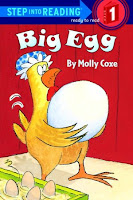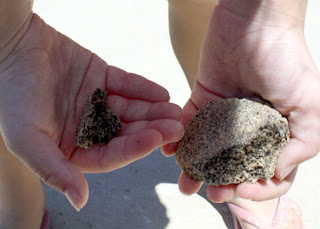Hooked on Phonics: Kindergarten
Level 1 - Word Families
-at, -an, -ap, -ad, -am, -ag, -ab, -ig, -id, -it, -ip, -im, -in, -ix, -ill, Add -s
Level 1 - Helper Words
he, a, the, no, and, has, is, on, she, what, this, they, go, have, do, look
Level 2 - Word Families
-ot, -op, -ox, -ob, -og, -ug, -un, -ut, -ub, -up, -ed, -en, -et, -eg, -ell, -ck, Compound Words
Level 2 - Helper Words
here, that, for, see, are, I, like, to, me, who, my, of, said, was, with, you, then, be
Hooked on Phonics: First Grade
Level 1 - Blends
ch-, sh-, th-, wh-, sl-, sn-, sm-, sp-, sc-, sk-, sw-, st-, fl-, gl-, cl-, bl-, pl-, gr-, fr-, br-, cr-, pr-, dr-, tr-, qu-, Two-Syllable Words
Level 1 - Helper Words
play, come, his, over, says, now, ride, blue, there, very, could, we, little, some, out, down, those, all
Level 2 - Digraphs
-ch, -tch, -sh, -th, -mp, -nd, -ng, -nt, -nk, -st, -sp, -sk, -ft, -lk, -lt, -ing, -er, -ly, -es, -ed, Two-Syllable Words
Level 2 - Helper Words
make, goes, want, first, begin, her, too, one, or, say, friend, know, were, so, would, saw, your, old
---------------
Step Into Reading: Step 1, Ready to Read
I really like this series. The numbering system seems appropriate, consistent and useful.
Step 1, Ready to Read (Preschool-Kindergarten): Big Type and Easy Words - Rhyme and Rhythm - Picture Clues - For children who know the alphabet and are eager to begin reading.
There are many, many more Step 1 books in the series, but these are some that Tessa can currently read with little help from me.
I Can Read!: My First Shared Reading & 1 Beginning Reading
I am sorely disappointed with this series. I cannot imagine any true beginning reader being able to read many of the My First Shared Reading or 1 Beginning Reading books. Some My First Shared Reading books border on being o...k...a...y, but just aren't as well thought out as the Step into Reading ones above. The 1 Beginning Reading books are way too long for new readers. A child would need to be reading fluently to make it through them in one sitting.
To give an idea, I flipped through I Can Read!: My First Shared Reading, Little Critter: Just Helping My Dad by Mercer Mayer. Some highly questionable words, in my opinion, include: home, today, things, work, sleepy, breakfast, myself, mower, sorry, something, nails, parking, and great.
My First Shared Reading: Basic language, word repetition, and whimsical illustrations, ideal for sharing with your emergent reader.
1 Beginning Reading: Short sentences, familiar words, and simple concepts for children eager to read on their own.
I plan to try the following I Can Read! books soon with Tessa, but I know I will have to help her a good bit more than I did with the Step into Reading books above.
Holiday House: I Like to Read
I Like to Read books are picture books designed for the newest readers, featuring short texts, familiar vocabulary, repetition to reinforce learning, and illustrations that are designed to be a part of the learning experience.
Run to your library now and look these up! Tessa read See Me Run by Paul Meisel today and thoroughly enjoyed it.
Download Holiday House I Like to Read full-color brochure and/or press kit.
A Rookie Reader
Other Readers
This post feels as though it's getting a bit long, so I'm going to wrap it up for today. Other early readers to keep an eye out for are Scholastic Reader Pre-Level 1 books, the new Scholastic Reader Bob Books series and books by Mo Willems (An Elephant & Piggie Book, and Cat series).
This post feels as though it's getting a bit long, so I'm going to wrap it up for today. Other early readers to keep an eye out for are Scholastic Reader Pre-Level 1 books, the new Scholastic Reader Bob Books series and books by Mo Willems (An Elephant & Piggie Book, and Cat series).







































